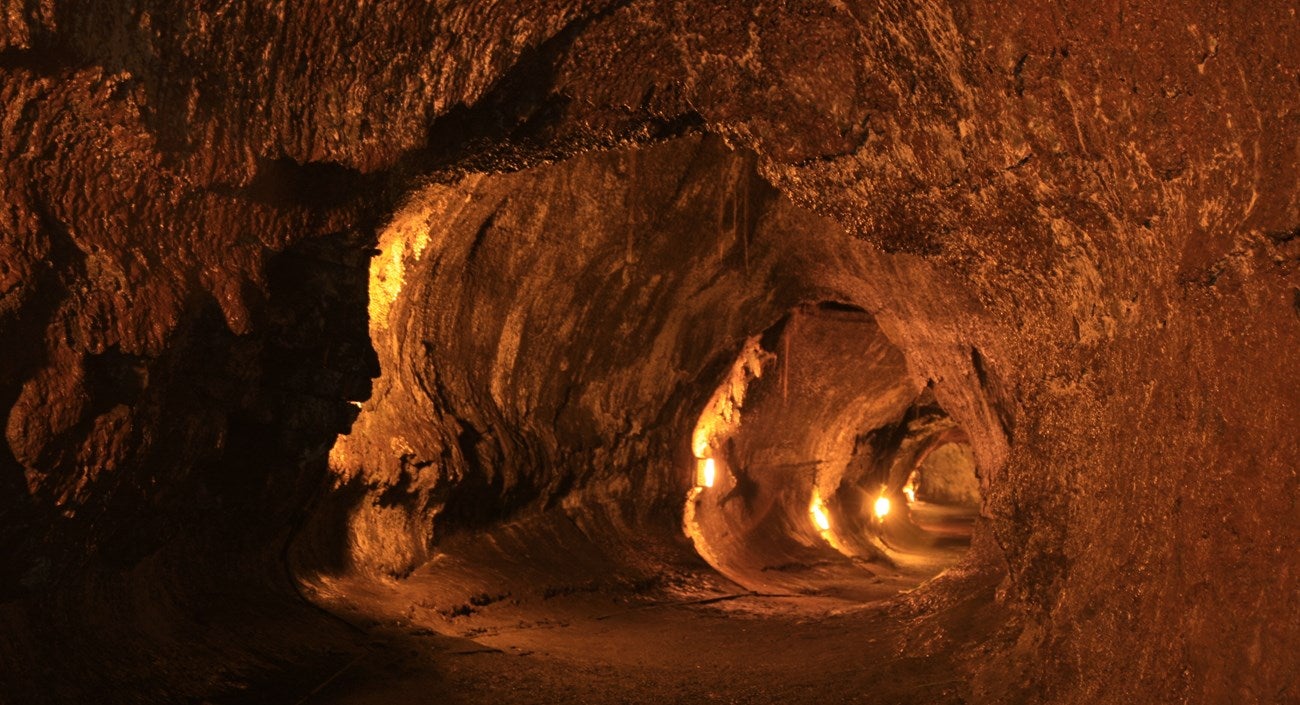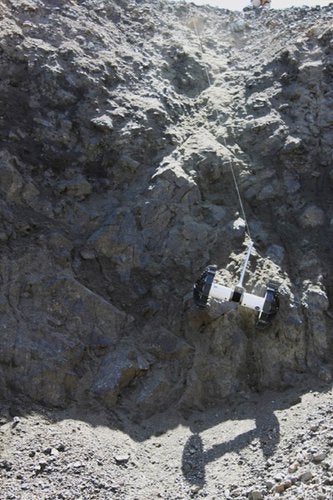
In the realm of space exploration and potential colonization, the concept of utilizing caves – particularly lava tubes – as habitats has garnered both fascination and skepticism.
Proponents argue that caves could provide natural shelters on extraterrestrial bodies like the Moon and Mars. Critics raise concerns about their stability and practicality. Either way, lava tubes have always been an intriguing feature for space exploration enthusiasts.
In addition to their potential as habitats for future human colonization, lava tubes can be studied to provide insights into the geological history of their celestial body. These features form when molten rock flows from the ground. As the lava cools and solidifies on the surface, it creates a protective layer, preventing heat from escaping and wind from cooling it. Eventually, the lava drains out, leaving behind a smooth and steep-walled cave.
Related: New evidence for lava tubes on the Moon
These lava tubes can stretch for miles. The longest known lava tube on Earth is the 40-mile-long (65 kilometers) Kazumura Cave on the Big Island of Hawaii. However, lava tubes on the Moon and Mars may be even longer. Most of these features likely date from 3 billion to 4 billion years ago, when both bodies had frequent volcanic activity. Images snapped by orbiting probes show openings into underground voids, often called skylights, which most likely formed when the roofs of lava tubes collapsed.
Home away from home

The potential of the tubes as living quarters is appealing for many reasons, such as the protection they would provide from radiation. The underground environment would also be buffered from temperature swings, making it more stable and hospitable than the surface environment. Additionally, the rock roof of the Moon and Mars’ lava tubes would be a natural shield against micrometeorites that could otherwise puncture spacesuits and buildings.
“Exploring a pit on the Moon, or even building a structure inside a lava tube, may seem like science fiction,” Laura Kerber, a Jet Propulsion Laboratory (JPL) research scientist specializing in physical volcanology tells Astronomy. “With the advancements in technology and space exploration, such a feat could be possible. Once inside the pit or lava tube, building a structure would be no more difficult than building on the Moon’s surface. In fact, it may even be easier due to the favorable temperature conditions. Inflatable structures or building with available regolith and blocks could be options for constructing a shelter.”
Kerber has already worked up a plan using current technology to investigate lunar caves and lava tubes for signs of life and potential future habitation. Dubbed Moon Diver, the concept proposes sending the JPL-developed Axel extreme terrain rover into one of these pits, where it would rappel down the wall via a winch to reveal the flood basalt eruptions’ inner workings and shed light on the lunar mare’s history.
“The idea was to land near the entrance inside a lander like InSight and then rappel into the pit opening,” Kerber says. “The Axel is perfect for this because it houses the instruments inside its wheels. This means you can stop in one spot and look at it with four different instruments.”
Building a structure inside a lava tube may sound daunting, but it’s not impossible, says Kerber. “With the right technology and determination, we may one day see a base on the Moon with all the amenities needed to sustain life.”
Scientists at the universities of Bologna and Padua examined the underground crevices that lava generated on Mars and the Moon and determined that human habitation is likely. An Earth-Science Reviews study compared earthly tubes, which normally have a diameter of 33 to 98 feet (10 to 30 meters), to martian and lunar ones, estimating they are 100 and 1,000 times wider, respectively. These extraordinary dimensions are explained by lower gravity and its impact on volcanism.
“Lava tubes could provide stable shields from cosmic and solar radiation and micrometeorite impacts, which are often happening on the surfaces of planetary bodies,” said Francesco Sauro, professor in the Department of Biological, Geological, and Environmental Sciences at the University of Bologna in a 2020 press release. “Moreover, they have great potential for providing an environment where temperatures do not vary from day- to night-time.”
Impractical dwellings?

However, not all are as convinced. Critics raise concerns about their stability and practicality.
“Advocates for cave habitats often overlook the practical realities and complexities associated with these underground structures,” Pascal Lee, co-founder and chairman of the Mars Institute, a planetary scientist at the SETI Institute, and principal investigator of the Haughton-Mars Project at NASA Ames Research Center, tells Astronomy. “Many proposals come from individuals with limited spelunking experience who view caves as inherently stable cavities. However, geologically complex caves, with potential risks of collapse and limited accessibility, present formidable challenges.”
Lee says limestone caves, common on Earth, are often deemed stable and have served as improvised shelters throughout history. They are typically located in areas less prone to seismic activity, with nearby water sources, which made them relatively suitable for early explorers.
However, lava tubes present an entirely different story. Formed through the rapid cooling and solidification of molten rock, the walls of lava tubes consist of glasslike material, marked by jagged and brittle surfaces. Stresses and fractures accumulate within the rock during this cooling process, rendering lava tubes highly unstable and susceptible to collapse.
“Unlike limestone caves, which are often associated with proximity to water, lava tubes have no such connection,” Lee says. “This raises questions about the practicality of relying on a cave located miles away from a water source. While snowmelt could potentially provide water, its availability would be limited, making sustained habitation challenging. Furthermore, living at the altitude of a volcano, dependent solely on snowmelt, raises concerns about the availability of sustenance.”
Examining the historical usage of lava tubes on Earth reveals a dearth of long-term occupation. Even in volcanic regions like Iceland, where such caves exist, their occupation has been sporadic and temporary.
Lee says while caves have a certain romantic allure, drawing comparisons to early human shelter usage, the analogy falters upon closer inspection. The practical realities of space exploration demand that habitats be established upon arrival, rather than relying on pre-existing caves. Unforeseen geological uncertainties and the impracticality of using a cave without thorough engineering assessments make it an unrealistic choice for initial settlement efforts.
“Robotic exploration can provide valuable data about caves on other celestial bodies,” Lee said. “However, even the most advanced robots cannot conduct comprehensive civil engineering surveys or assess the suitability of a cave for human habitation. To truly understand the dynamics and risks associated with caves, we must explore them extensively, studying their configurations, stability, and potential for collapse.”









